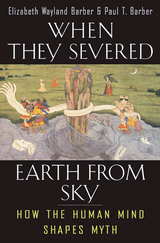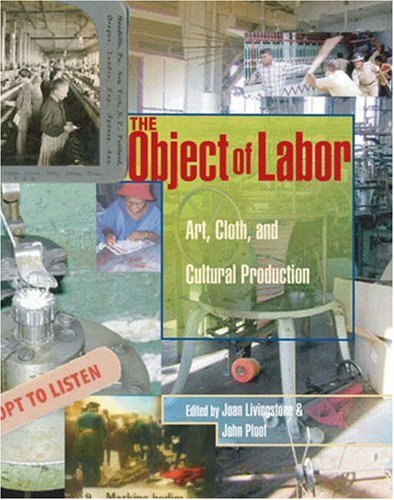I thought I had stumbled across the web site of an obscure religious cult or maybe just an extreme evangelical sect.
The signs were there. First the changing banner at the top showing images of The LEADER, sometimes looking meaningfully into the distance, sometimes preaching to his devoted disciples, and sometimes staring you directly in the eye convicting you of … you don’t know what but something. Then there was the sidebar densely packed with adverts for books (mostly by The LEADER) including the quotation from the review (by someone you had never heard of) telling you this book would “change the world”. Not to forget the devotional DVDs featuring The LEADER as narrator, or of him talking with others Of Like Mind … a sure sign of these fundamentalist sites when they only discuss with those Of Like Mind.
You need never be fooled, the signs are always obvious – even the address the “Upper Branch” office in California (I assume novitiates start on the Lower Branch) and the inevitable link to a ‘Foundation’ in this case a Foundation for “Reason and Science” – definite shades of Mary Baker Eddy!
The comments at the ends of articles were a little more unusual – it is only the most open cults (or the most confident in their brainwashing) that allow their members voices – but these were not exactly what I expected certainly unmeasured, but with a tone somewhere between MySpace and British National Party … definitely Mid-West Millenialist. About 1 in 7 were even odder with some words I couldn’t make sense of (a form of net-speak?) and even when the words were English the order seemed random and virtually grammarless .. of course, glossolalia … Pentecostal influences. … but most unsettling of all were the images chosen by the contributors as their icons, some I could not even recognise and wonderd if were even legal,
and the site? … RichardDawkins.net (and I feel I ought to pronounce the name in hushed tones), the self professed “clear thinking oasis” … well no false modesty here.
Amongst the top level tabs on the pages are the ‘Store’ (what else) ‘Donate to RDF’ (the Richard Dawkins Foundation silly, not the semantic web notation!) and ‘Science’ and ‘Reason’. Under ‘Science’, we see everything from Archaeology to Psychiatry, Economics and Law .. yes he really is omniscient. Under ‘Reason’ we find less entries: ‘News’, an FAQ and … out of only five content categories … “Religion as Child Abuse” … note not even “Religion and Child Abuse” but “Religion as Child Abuse”. It is good to know that ‘Reason’ has such a staunch defender.
 Recently I have been reading “When They Severed Earth From Sky“. The authors, Barber and Barber, describe recurrent patterns in myths across the world – not in a Jungian sense of archetypes, but because we all share a common human nature and cognitive make-up (they subtitle the book “How the Human Mind Shapes Myth”). They mention (p.93) the frequent myth of cannibalism ascribed to one’s enemies citing Arens’ “The Man Eating Myth“, in particular are accusations of abuse against children: the Romans accused the early Christians of infanticide and the Medieaval Christians did the same to the Jews. … it seems Myths die hard and ‘Reason’ can always be helped by a bit of mud slinging.
Recently I have been reading “When They Severed Earth From Sky“. The authors, Barber and Barber, describe recurrent patterns in myths across the world – not in a Jungian sense of archetypes, but because we all share a common human nature and cognitive make-up (they subtitle the book “How the Human Mind Shapes Myth”). They mention (p.93) the frequent myth of cannibalism ascribed to one’s enemies citing Arens’ “The Man Eating Myth“, in particular are accusations of abuse against children: the Romans accused the early Christians of infanticide and the Medieaval Christians did the same to the Jews. … it seems Myths die hard and ‘Reason’ can always be helped by a bit of mud slinging.
As an academic I am a little taken aback that a fellow academic would lend his name (or should I say His Name) to a site like this, but I guess every wandering preacher needs to earn a buck … and anyway he is an Oxford professor and I was a Cambridge man so never did trust the other place.
More seriously, for some time I have had a half-written entry about the religious issues of evolution. I use evolutionary arguments frequently in my work, but wish to distance myself from the pseudo-religious evolutionists … maybe soon I’ll finish it.
Significantly (yes this is one of those confession moments), after all my life being a solid Darwinist, there was a period in my mid-twenties when I doubted Evolution (brothers pray for me) … and it was exactly writing like this that made me doubt. If the arguments for evolution were made in this way and those who supported it were so unreasoned, could one trust it at all.
Although mentioning Genesis will I am sure instantly condemn me, I was reminded while looking at this site of the tower of Babel and the people who thought that if they built enough of an edifice they would become like God.
 The one redeeming feature on the Dawkins’ site is that amongst the many images of him gazing into the distance, or preaching to the converted is one of a chimpanzee. If you can at least see the funny side of yourself there is some hope.
The one redeeming feature on the Dawkins’ site is that amongst the many images of him gazing into the distance, or preaching to the converted is one of a chimpanzee. If you can at least see the funny side of yourself there is some hope.


